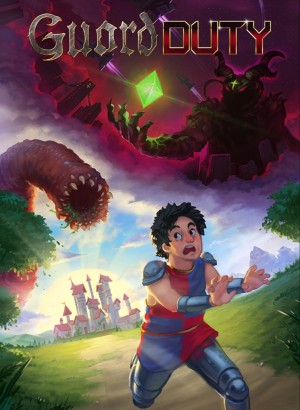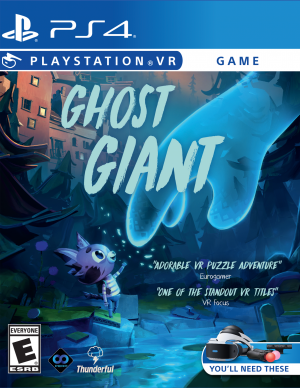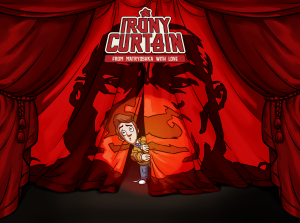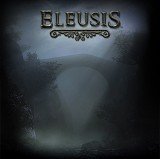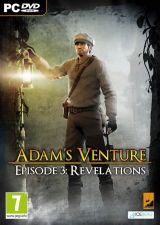Review for Dr. Doyle and the Mystery of the Cloche Hat
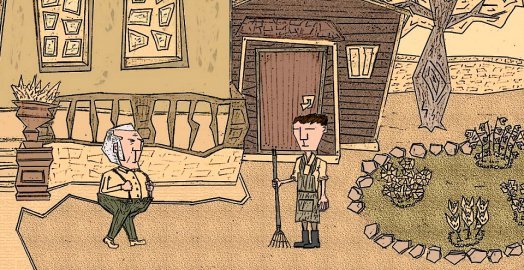
It can’t be easy to write a murder mystery that succeeds telling a compelling story yet also rewards the player for their own observational and puzzle-solving skills. But that’s exactly what I discovered when I booted up Dr. Doyle and the Mystery of the Cloche Hat, a fantastically written investigative adventure filled with interesting characters, plenty of twists, a uniquely stellar presentation and just enough dry wit to keep things from getting too melodramatic. Really the only thing holding it back is the gameplay occasionally slowing the pace down too much, but that’s at least in part because you’ll be so eager to see what happens next.
It’s autumn of 1923 in Dover, England. A house owned by an elderly woman named Mrs. Pike was broken into and Dr. Doyle, a coroner who often works with the police, has shown up to shed some light on what transpired. After learning that nothing of significance had been reported stolen, Doyle returns to the police station where his friend, Detective Inspector Adam Reed, informs the good doctor that a similar break-in happened a few days ago at a clothing store called Featherstone’s Boutique. Upon visiting the earlier crime scene, the owner Eldridge Featherstone explains similarly that nothing was taken. Doyle then returns to Pike to discover that she had been a patron of the store that week to buy a seemingly normal, inexpensive blue cloche hat with a white rose pattern, and the culprit had tried taking it from the store before realizing Mrs. Pike had bought it already.
Upon piecing the two events together, the perpetrator is identified as Henry Chapman (not a spoiler), an ex-con recently released from prison. Still, a simple hat theft doesn’t seem that important… before Chapman shows up dead in an alleyway the next morning (also not a spoiler) without the chapeau in question. Now with even more questions raised, Dr. Doyle realizes there’s more going on than they originally suspected, and it’s up to him to find the missing hat before more people die.
The story is the strongest part of the experience, best described as an almost Sherlock Holmes-type of adventure in which you explore a classically British setting, observing every detail in every room, interrogating everyone you meet with a myriad of questions (some even get perturbed at how curious Dr. Doyle tends to be) and stockpiling evidence and clues in a somewhat sad but dramatic tale of wanton greed. Filled with twists and turns, there are moments when the mystery will genuinely pull the rug out from under you with a single new clue that totally changes the direction of the case, so it’s best to be suspicious of everyone.
You aren’t simply observing a great detective at work, either, as players are constantly engaged with advancing the story directly. At least, when you’re not sitting through lengthy conversations, that is. The writing is solid throughout, but there’s so much spoken dialogue that sometimes minutes can go by without needing any personal interaction. Anyone expecting an action-packed manhunt may find the very relaxed pace to be boring, at least at first, as this is indeed a slow-burn that takes its time to heat up the plot elements.
There can’t be a good mystery without a strong cast of characters, of course, and here you’ll find yourself in the company of plenty of oddballs who all have distinct personalities and interests that tie them to the case for different reasons. Some of the more memorable inhabitants of Dover include Lady Lawson, a spoiled aristocrat who makes every conversation about her; her meek fiancé William Shaw, who is too timid to oppose her boisterous personality; the shady pawn emporium owner Pemberton, who does mostly over-the-table transactions but knows more than he lets on; and the frantic shopkeeper Mr. Featherstone, who’d rather not talk about unsavoury topics like murder in his establishment. While not all of them are considered suspects, they each have a part to play in Doyle’s inquiry. Most NPCs are given adequate screen time, with plenty to say about their relationships to one another and their differing views on various aspects of the investigation when questioned about it.
Dr. Doyle himself is a fun protagonist to spend time with. He’s got a knack for asking questions, even though he knows it annoys people, but doesn’t waver in the face of possible danger. He also has a tendency to be a smartass, and it’s stated that Inspector Reed is the only one on the police force who can tolerate him (and indeed it feels like even he just barely does so a couple of times). At some points during dialogue-heavy moments, you can choose from a couple of different responses for Doyle, usually between a formal or sassy one. This doesn’t impact the information you ultimately receive, but it’s nice to have the option to roleplay Doyle as polite or quippy as you’d like him to be.
The interface is quite easy to grasp, using the left mouse button for most actions, including moving Doyle around the screen, picking up and interacting with different items, and looking at things for Doyle’s professional thoughts on the matter that can clue you in on what to do next. The spacebar can be used to highlight every interactive hotpot on screen for a few seconds, which is helpful because some rooms have a lot of them to mess around with. Doyle’s walk speed is slow, but this is only a problem when exploring a larger room, as double-clicking an area exit will automatically take you to next screen. A score counter sits in the top centre of the screen, rewarding you for various accomplishments along the way, leading to a ranking at game’s end that informs you how you did.
The gameplay is pretty much classic point-and-click: Roam around, look at and touch everything you can, talk to others and use inventory on everything, sometimes randomly until something works. There are a few times when a dialogue tree is part of a puzzle, requiring you to pick the right answer to progress. These aren’t as common as the regular ones in which you get information regardless, and thankfully if you pick the wrong answer you can just try again like nothing ever happened.
A slight twist on the usual inventory mechanic is that rather than combining zany items, Dr. Doyle takes a more grounded approach using actual case evidence. This includes not only physical clues but also knowledge without tangible form, represented by a picture of the object/person/location in question, both of which you can take out of inventory to question people about or use them in the environment. For example, you can ask if someone has come across a particular suspect or use your knowledge of what was found in a victim’s body to research how exactly they were they killed.
A clever aspect of knowledge clues is that when you learn more about a specific subject, its inventory icon gets automatically upgraded in a sense, alerting you that you can go back and press people for more information now that you have more context. This update is depicted by either the background of the clue changing colour, or a different image being used all together. For instance, the “mysterious prowler” clue at the very beginning of the game becomes Henry Chapman once you discover his name. This helps make you feel like a real detective, always discovering additional details and using them to ask better questions. The only problem is that it can be a bit tiresome going back and forth between NPCs, and sometimes trial and error is necessary once the whole map opens up.
The production values, like the writing, are top-notch, though the graphics might be an acquired taste. The visual presentation displays highly stylized line art that is reminiscent of comic newspaper art from that era, an effect reinforced by the backgrounds all being tinged in pleasant sepia tones while characters and certain objects have normal (if still muted) colours. The old-timey feel is a fitting approach, and the distinctive character designs blend right in with exaggerated features to help accentuate their personalities. The rather rotund Dr. Doyle is unique looking, his grey hair and long sideburns coupled with simple overalls and a nice dress shirt, his hands forever clasped around his suspender straps.
Animations are serviceable but unremarkable. Most characters don’t do much besides move their hands and feet while standing around idly. Some are more energetic, like Thomas raking the front yard of Whitehaven, but even he stands completely still while his hands operate the rake. This limited movement extends to facial expressions as well, as people rarely emote. Given the old-fashioned aesthetic, however, I think the choppy animations are completely appropriate. There are only a few cutscenes sprinkled in either at the beginning or end of the game’s five acts, or during a flashback when someone is recounting an event. These use the same in-game sprites and aren’t really cinematic at all, but they are important to the story and often have great musical accompaniment.
The adventure may feel somewhat open-ended, with more areas opening up on the quick travel map as the plot progresses, but events still play out in a linear fashion, which can become obvious when you’re stuck looking for that one right clue to ask the right person about. You’ll be visiting a variety of locations around Dover, including the somewhat-in-disrepair manor of Lady Lawson, the Pemberton Emporium (which is obviously peddling both stolen goods and junk), and Dr. Doyle’s own cold, clinical morgue underneath the Royal Victoria hospital, suitably filled with books on academic subjects. There you’ll also find a chemistry desk needed more than once to upgrade clues in a CSI manner by finding trace substances on evidence you’ve collected.
Each location has its own particular look and is filled with details that Dr. Doyle can mull over for new clues and details. More than half the settings are confined to a discrete single room, though Whitehaven Hall has four. The only hindrance to conveniently getting around quickly is that you can’t open the map on a whim, instead being forced to leave the current scene from where you entered. This isn’t a big deal, but it’s worth noting since a map button – perhaps linked to the other otherwise little-used right mouse button – could have shaved a bit more time off the necessary backtracking.
The score shares the same quality as the visuals, comprised of clear, classically haunting instruments that perfectly suit the various backdrops. The Whitehaven interior uses sharp violins and deep brass, exactly as you’d expect to hear playing in a big mansion, while the Pemberton Emporium has an almost ragtime piano piece that matches the comically shady shop owner. The music changes to a more dramatic piece when story-critical moments are revealed, almost sounding like a classic murder mystery film at points. The ambient effects are also great, with even the map screen simulating crowd noise as Dr. Doyle travels from place to place.
The characters are limited to mumble words in place of fully spoken dialogue, each making a collection of sounds that vary in pitch. While the lack of real voice acting may be disappointing to some, I so quickly got used to it that I didn’t notice it much while playing, and particularly for a game with so much dialogue, it’s an effective way to cover a whole array of characters without worrying about individual actors for each. If you’re not a fan of the sounds, you can click to skip the voices and read the written dialogue in silence.
Technically the game doesn’t ask much to run, and nowhere during my six-hour play time did I encounter any kind of glitch or hiccup. The program does run at a relatively low resolution, however, so when playing on a standard 1920x1080 monitor there is a large black border around the game screen.
He may not be as well-known as Sherlock Holmes or as dramatic as Hercule Poirot, but the titular star of Dr. Doyle and the Mystery of the Cloche Hat is a welcome addition to the crime-solving adventure family. His first – and hopefully not last – outing is a gripping murder mystery filled with surprising twists, relatable characters, and stellar art and sound direction accompanied by an interesting take on the tried and true point-and-click formula. It can be wordy and it’s in no hurry to get where it’s going, but stick with it and you’re sure to feel like a real sleuthhound on the streets of 1920s England.











